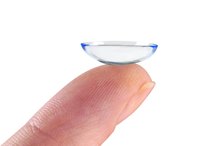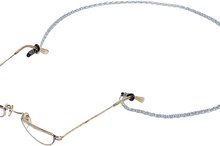The Best Frames for Progressive Lenses
The progressive lens, also called no-line bifocals, is a type of lens that works like typical bifocals or trifocals without the visible lines seen in such traditional lenses 234. This allows you to hide the fact that you now need reading glasses, which is usually brought about by age. When wearing progressive lenses, you can easily see at a distance and also read up close without annoying bifocal lines in the glasses 234.
Size
Unlike with bifocals and trifocals, which really require large-size frames, the use of progressive lenses allows many eyeglass wearers to choose smaller frames; the technology involved in progressive lenses already makes it possible to have enough space for the glasses’ nearer area for reading and the farther area for looking at a distance 234.
Although larger frames generally allow for better optical coverage, the person preferring a smaller frame can be accommodated; the eye care professional can measure the frame and lenses to determine the kind of progressive lens that will work best in the specific smaller frame preferred 234.
Visual Needs and Functionality
How to Compare Varilux and Shamir Progressive Lenses
Learn More
The needs for a frame design usually vary. One person may prefer having a pair of eyeglasses meant primarily for reading and using the computer, while someone else may be geared toward a more active lifestyle. Although all these activities are readily manageable with any type of progressive lens, the frame shape and size would require more customized measurements prioritizing the person’s visual needs for the glasses. This leads to better functionality and convenience. In general, the size of the central corridor of optimum vision and the corridor devoted to viewing various distances are measured according to how wide or narrow you want the specific viewing distance to be for the eyeglasses.
- The needs for a frame design usually vary.
- Although all these activities are readily manageable with any type of progressive lens, the frame shape and size would require more customized measurements prioritizing the person’s visual needs for the glasses.
Material
Since acquiring a frame with progressive lens is relatively more expensive because of the more customized requirements for its construction, it is always best to invest in durable frames. Progressive-friendly frames include those made of metal, pewter, plastic and titanium.
The choice of material for the eyeglass frame is also dependent on the progressive lens’ material prescribed to the person. For instance, glass lenses are not ideal for strong prescriptions because they can already be too heavy. In the same way, if the lens’ weight is already a given, the frame material should be lighter for comfort.
- Since acquiring a frame with progressive lens is relatively more expensive because of the more customized requirements for its construction, it is always best to invest in durable frames.
- In the same way, if the lens’ weight is already a given, the frame material should be lighter for comfort.
Styles
Types of Eye Glasses for Someone Nearsighted
Learn More
With the wide range of styles available from many competing frame manufacturers, there is a variety of frames to choose from for progressive lens wearers. Those who are concerned with brand recognition prefer branded and more expensive frames that have designed logos embedded somewhere within the eyeglasses, usually in the temple tips. Some people are very particular about frame colors, and perhaps favor adornments such as rhinestones and intricate cutouts. These designs don’t normally affect the optical functionality of progressive lenses, so wearers can generally purchase the design of their choice 234.
- With the wide range of styles available from many competing frame manufacturers, there is a variety of frames to choose from for progressive lens wearers.
- Those who are concerned with brand recognition prefer branded and more expensive frames that have designed logos embedded somewhere within the eyeglasses, usually in the temple tips.
Related Articles
References
- All About Vision: Progressive Lenses Replace Bifocals for Age-Defying Appearance
- Hunt and Shaw: How Progressive Lenses Work?
- Master Eye Associates: Progressive Lenses
- Alvarez TL, Kim EH, Granger-donetti B. Adaptation to Progressive Additive Lenses: Potential Factors to Consider. Sci Rep. 2017;7(1):2529. doi:10.1038/s41598-017-02851-5
- Han SC, Graham AD, Lin MC. Clinical assessment of a customized free-form progressive add lens spectacle. Optom Vis Sci. 2011;88(2):234-43. doi:10.1097/OPX.0b013e31820846ac
Writer Bio
Rianne Hill Soriano is a freelance artist/writer/educator. Her diverse work experiences include projects in the Philippines, Korea and United States. For more than six years she has written about films, travel, food, fashion, culture and other topics on websites including Yahoo!, Yehey! and Herword. She also co-wrote a book about Asian cinema.









